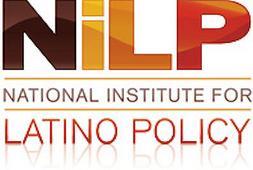
NiLP Latino Datanote
The 2016 Latino Presidential Vote in New York City
By Angelo Falcón
The NiLP Report
Latino voters in New York City were for the most part on the losing side of the Presidential vote that went to Donald Trump this year but on the larger share of the popular vote supporting Hillary Clinton. In the national debate of where the Latino vote stood in terms of the Trump victory, there is a question whether the national exit poll finding of 29 percent versus the Latino Decision's 18 percent of the Latino vote went to Trump. Where did the Latino vote in New York City find itself within this discussion?
Latinos make up about 29 percent of the population of New York City, totaling some 2,4 million residents. It is perhaps the most diverse Latino population in the country, with the majority being Puerto Rican and Dominican, followed by Mexicans, Ecuadoran, and Colombians, among the larger national-origin groups. While there are Latinos elected to Congressional state legislative and city council seats, there are none elected to citywide or statewide office despite the size of this community. The one citywide position held by Latino is City Council President, which is elected by that body and not the voters at large.
Utilizing a homogeneous Assembly District analysis, we are able to estimate how the various major racial-ethnic population groups in New York City voted, thanks in large measure to the high level of residential segregation in existence. We estimate that 17 percent of the Latino vote went to Trump compared to 81 percent for Clinton.
Trump received the least support from Blacks (8 percent) and most support from Whites (31 Percent) in New York City. Although there was much speculation about the possibly greater role of third parties given the general dissatisfaction with major party candidates, it is clear that support for third parties was virtually nonexistent across all groups.
Latinos had the lowest voter turnout rate. Only 52 percent of Latinos turnout out to vote ( as a percentage of those registered). This is in comparison to 54 percent of Asians, 55 percent of Blacks and 59 percent of Whites.
Regarding political party registration, more than two-thirds of Latinos (72 percent) were registered as Democrats, a percentage only exceeded by Blacks (76 percent). This is in comparison to 64 percent of Asians and 56 percent of Whites who are registered, Democrats.
When the Latino vote is broken down by borough, a difference emerges. Although the Trump vote by Latinos was from 6-8 percent in Brooklyn, the Bronx, and Manhattan, it was 17 percent in Queens. This is reflective of a long-term difference in the political preferences of Puerto Ricans and Dominicans with Central and South Americans who are largely concentrated in Queens. Despite this differences, the majority of Latinos are registered Democrats in all boroughs.
It is also interesting that Latino voter turnout rates were higher in Manhattan and Queens (55 percent) than in Brooklyn and the Bronx (50 percent). It is in Brooklyn and the Bronx where the older Latino populations of Puerto Ricans are concentrated, while Manhattan and Queens Latinos are primarily Dominican and Central and South American.
Looking at the voting by the largest Latino national-origin group in the Assembly District, the borough-based analysis was replicated. Trump had the least support among Puerto Ricans and Dominicans, and greater support among other Latinos.
Discussion
The New York City Latino vote is more in line with the finding that at the national level, Trump received 18 percent of the Latino vote. An analysis by Israel Colon of the Latino vote in Philadelphia found that only 7 percent of Latino voted for Trump. As the dust settles and we get further reports on the Latino vote in other localities, we may get a better picture of the nature of Latino vote in this year's historic election.
